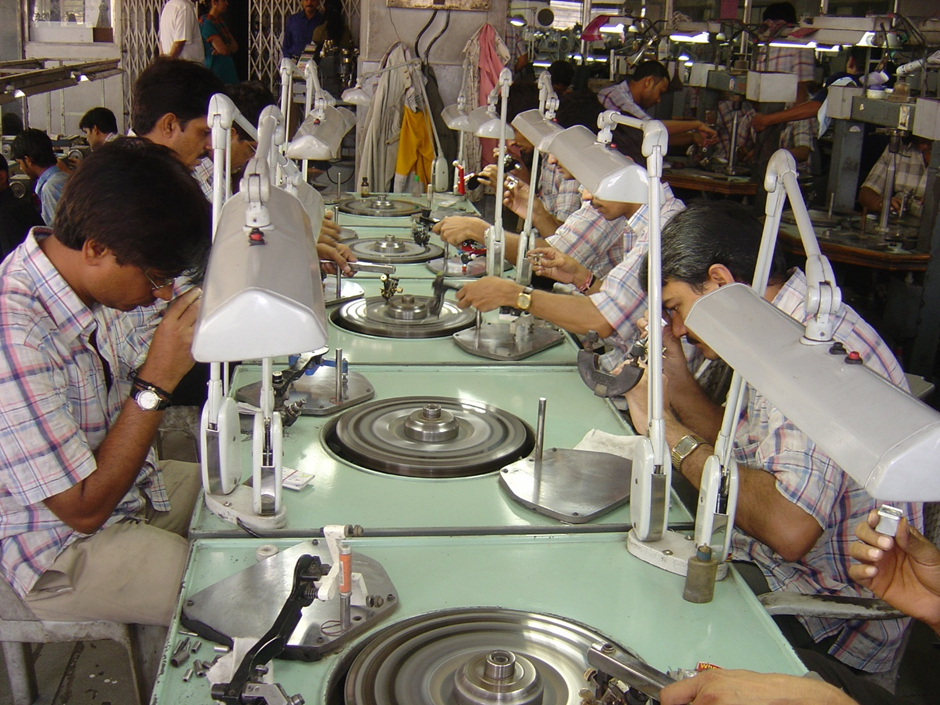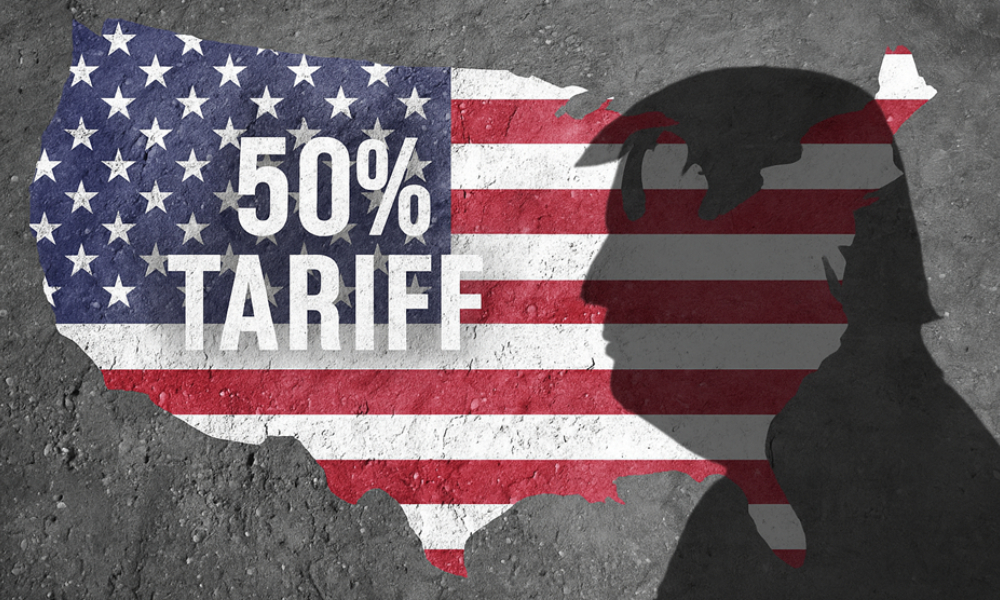America’s new duties could deal a crippling blow to India’s gem & jewellery industry
Ask any SEEPZ jeweller where their latest consignment is headed, and eight times out of ten the answer is “America.” That single market has powered paycheques, kept workshops buzzing, and justified the long hours our artisans pour into every piece. Now, Trump’s 50% tariff threatens to snap that lifeline overnight.
In Surat’s diamond belt, margins are already tight, credit is slow, and skilled hands are plentiful but underpaid. Losing half the export market isn’t just a revenue shock—it’s a rupture in the ecosystem that connects cutters, polishers, designers, and exporters in a delicate chain.
Competitors in Turkey, Vietnam, and Thailand, facing far lighter tariffs, are already making calls to our buyers. Once those relationships shift, history tells us they’re hard to reclaim. The risk isn’t simply a bad season—it’s a hollowing out of India’s midstream strength, a slow drain of skills and capital to friendlier shores.
The time for quiet concern is over. The Indian gem and jewellery industry needs targeted relief, SEZ reforms, and aggressive trade negotiations—not next year, but now. The sparkle that India has built over generations is too valuable to lose to a tariff war we didn’t start.
On 27th August 2025 the US will double tariffs on Indian gems and jewellery from 25% to 50%. For one of India’s most profitable luxury exports—worth $10 billion a year—this is no minor irritation. It is a strike at the heart of an industry that sustains millions of livelihoods and underpins the country’s global reputation as a jewellery powerhouse.
“The US announcement of a sweeping 50% tariff on all Indian goods is a deeply concerning development,” says Kirit Bhansali, Chairman of the Gem & Jewellery Export Promotion Council (GJEPC). “This move would have far-reaching repercussions across India’s economy—disrupting critical supply chains, stalling exports, and threatening thousands of livelihoods. The Indian gem and jewellery sector, in particular, stands to be severely impacted. The United States is our single largest market, accounting for over $10 billion in exports—nearly 30% of our industry’s total global trade. A blanket tariff of this magnitude is severely devastating for the sector. There is significant dependency on the US market, as 85% of exports from SEEPZ SEZ, which provides 50,000 jobs, are directed there. For cut and polished diamonds, half of India’s exports are US-bound. With the revised tariff hike, the entire industry may come to a standstill, placing immense pressure on every part of the value chain—from small karigars to large manufacturers.”
In Gujarat, the diamond belt spanning Surat, Navsari, Bhavnagar, Junagadh, Amreli, Palanpur, Visnagar, Botad, and Jasdan employs some 800,000 cutters and polishers. For them, the tariff threatens “an immediate collapse in exports,” says Ajesh Mehta, Convener of GJEPC’s Diamond Panel. “We urge the Government to act swiftly; this is not just about trade, but about protecting livelihoods and preserving India’s global leadership in the diamond midstream.”
FACT BOX – India’s jewellery trade at risk
$10 Billion
Value of Indian gem and jewellery exports to the United States in 2024—about 30% of the industry’s global sales.
50%
New US tariff rate from August 27th (up from 25%).
800,000
Jobs in Gujarat’s diamond belt—many at risk from the duty hike.
85%
Share of SEEPZ SEZ’s studded jewellery exports bound for the US.
15-20%
Tariff rates faced by competing exporters such as Turkey, Vietnam and Thailand.
125,000
Estimated jobs that could be lost within months without policy relief.
The pain will be uneven but widespread. Half of India’s cut-and-polished diamonds head for America. In Mumbai’s SEEPZ Special Economic Zone, 85% of studded jewellery exports go there; the enclave employs 50,000 people. “If the duty kicks in, exports to America will drop to zero,” warns Adil Kotwal, President of the SEEPZ Gems & Jewellery Manufacturers Association (SGJMA). No other market is large enough to compensate.
Competitors such as Turkey, Vietnam and Thailand, which face tariffs of just 15%, 20% and 19% respectively, will relish India’s discomfort. “A 50% tariff will make our products unviable in the US,” admits Alkesh Shah, Vice-Chairman of Goldstar Jewellery. “If it continues, we may have to shut that line of business entirely or shift part of our manufacturing overseas.”
Arvind Gupta, MD of Gallant Jewelry and Convener of GJEPC’s SEZ Panel, calls this “a defining test of our collective resilience and foresight” and urges exporters to diversify, set up operations in low-tariff countries such as the UAE or Mexico, and invest heavily in branding and design innovation to maintain relevance.
For Dinesh Lakhani, Group Director, Kiran Gems Pvt. Ltd., the problem is straightforward: the tariff will make Indian stones “considerably less attractive” to American buyers. He wants export incentives, quicker GST refunds and infrastructure upgrades to maintain footing.

Colin Shah, MD of Kama Jewelry, fears “long-term structural damage” and the loss of 125,000 jobs unless SEZ reforms and new trade deals materialise quickly. Without these, he warns, US sourcing patterns could shift permanently.
Vipul Shah, CEO of Asian Star, says the hike “directly upends cost structures” and will require shifting capacity to other regions. The pressure, he warns, “will be felt all the way down to the workshops.”
The coloured-gemstone trade, smaller but still exposed, sees a sliver of opportunity: pre-tariff US inventory is suddenly more competitive, says Nirmal Bardiya, Chairman of RMC Gems. But the advantage will be fleeting. “This is a temporary pause, not the end of growth,” he says. “When tariffs ease, pent-up demand will fuel a rebound.”
Without action, India’s position as the world’s pre-eminent diamond-cutting hub could be eroded by layoffs, closures and the migration of manufacturing overseas.
“This isn’t just about jewellery,” says Kirit Bhansali. It is about whether India can keep its sparkle when trade winds turn cold.
Industry’s Ask: A Fast, Targeted Rescue Plan
Exporters are pushing for immediate relief:
- Duty-drawback scheme to refund part of the tariff.
- Permission for SEZ units to sell domestically.
- Extended credit lines and deferred interest payments.
- Reintroduction of the interest-equalisation scheme.
- Special liquidity packages akin to Covid-era relief.
Without intervention, India risks losing not only its largest jewellery market but also its global competitive edge—permanently.

